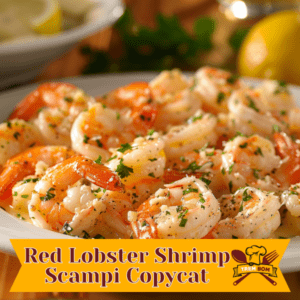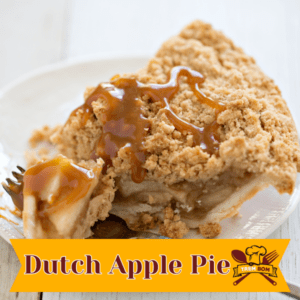
Introduction to Stir-Frying
Stir frying is a Chinese cooking method that has been adopted globally due to its convenience, versatility, and the undeniable charm of its results. A staple in Chinese cooking, stir-frying is a technique that involves the quick cooking of small pieces of food in a small amount of oil over high heat. Cooking over high heat is imperative to the process of the stir fry. The magic of stir-frying lies in its ability to bring out the best in its ingredients, preserving their color, texture, and nutritional value so that when you are done cooking, you not only have a delicious meal that everyone will love, but it is also pleasing to the eye as well.
The Basics of Stir-Frying
A typical stir-fry starts with heating a small amount of oil in a wok or a frying pan over high heat. Once the pan is hot, you add your meat or vegetables, constantly tossing them around to ensure even cooking. Spices, seasonings, and sauces such as soy sauce and pepper are then added to the mix, and voila! You have your stir-fry. It’s a simple process, but one that requires practice to perfect.
Stir-Frying vs Other Cooking Techniques
Compared to other cooking methods like deep frying and sautéing, stir-frying uses significantly less oil, making it a healthier choice. It also differs from sautéing in that it involves higher heat and more frequent stirring, leading to faster and more even cooking.
Essential Equipment for Stir-Frying
Choosing the right cooking utensils can make a significant difference in your stir-frying experience.
The Wok: The Heart of Stir-Frying
The wok, a round-bottomed cooking pan, is the centerpiece of stir-frying. Its shape allows for food to be cooked quickly and evenly over high heat. The hot wok imparts the “breath of a wok”, a unique flavor characteristic of stir-fried dishes.
Choosing the Right Cooking Utensil
If you don’t have a wok, don’t worry! A regular frying pan can also get the job done. Just ensure that it is large enough to handle the tossing of food without spillage.
Ingredients for Stir-Frying
Stir-frying is extremely versatile, allowing for a wide variety of ingredients.
Staple Ingredients in Stir-Frying
Typically, staple ingredients include meat or shrimp, vegetables like broccoli, bell peppers, spinach, and zucchini, and seasonings such as soy sauce, pepper, and chopped green onions. Other ingredients like cornstarch can also be used to thicken sauces, while sesame oil can add a distinctive flavor.
Unleashing Creativity: Variations in Stir-Fry Recipes
One of the beauties of stir-frying is its adaptability. You can stir fry almost any vegetable or meat, making it a perfect method to use up any leftovers. Get creative and experiment with different stir fry recipes. Just remember to chop your ingredients into small, evenly sized pieces to ensure they cook quickly and evenly.
A Step-By-Step Guide to Stir-Frying
Mastering the art of stir-frying involves understanding the preparation process and the cooking process itself.
Preparation: The Key to Successful Stir-Frying
Stir-frying is a fast cooking method, and as such, preparation is key. All ingredients should be ready before you start cooking. This includes chopping your vegetables and meat, making the sauce, and having all your seasonings at hand. While most traditional stir-fried dishes are done in woks, you can use a sautè pan if you don’t have a wok on hand.
The Cooking Process: How to Stir Fry
To begin, heat a small quantity of oil over high heat. Once you have some hot oil, add your meat or shrimp and cook until done. Remove and set aside. Next, add your vegetables, starting with those that take longer to cook like carrots and bell peppers. As they cook, make a hole in the middle of your pan and add any additional seasonings. Toss the food constantly to ensure even cooking. Finally, add your cooked meat back in, give it a final toss, and you’re done!
Iconic Stir-Fry Dishes Across Cultures
From its origins in Chinese cuisine, stir-frying has been adopted and adapted by many cultures, resulting in a rich variety of stir-fried dishes.
Chinese Stir-Fried Dishes
In China, stir-frying, or ‘chao’, is used in a plethora of dishes. From the traditional stir-fried noodles to dishes like Kung Pao Chicken, the possibilities are endless with this Chinese cooking technique.
Modern Takes on Traditional Stir Fry Recipes
In 2023, stir-frying continues to evolve with modern takes on traditional recipes. With a focus on health-conscious eating, many are incorporating more vegetables and using less oil in their stir-fries. It’s a testament to the versatility and enduring appeal of stir-frying as an excellent method of cooking.
Nutritional Value of Stir Fried Dishes
Stir-fried dishes are not just tasty but can be quite nutritious too.
Health Benefits of Stir-Frying
Stir-frying is a great way to cook food quickly without compromising their nutritional value. The high heat used in stir-frying helps to preserve the vitamins and minerals in the vegetables, making stir-fried dishes a healthy choice.
Balancing Taste and Health: A Stir-Fry Masterstroke
Creating a balance between taste and health is a masterstroke in cooking, and stir-frying helps achieve this. By using a small amount of oil, incorporating a variety of vegetables, and using flavorful seasonings, stir-frying creates dishes that are as healthy as they are delicious.
Conclusion: The Endless Possibilities of Stir-Frying
Stir-frying is more than just a cooking method – it’s an art form. Its versatility, health benefits, and the endless possibilities it offers make it a cherished technique in kitchens worldwide. Whether you’re a novice cook or a seasoned chef, mastering the art of stir-frying can add a new dimension to your culinary adventures.
Stir Fry FAQs
What is the best pan for stir-frying?
The traditional choice is a wok due to its high sides and even heat distribution. However, a large frying pan can also work.
Can I use olive oil for stir-frying?
Yes, but it’s important to note that extra virgin olive oil has a lower smoke point compared to other oils like canola or sesame oil, which may not be suitable for the high heat used in stir-frying.
How can I keep my stir-fried vegetables crunchy?
Quickly stir-frying your vegetables on high heat helps to preserve their crunchiness. It’s also crucial not to overcrowd the pan, which can lead to steaming instead of frying.
Can I stir-fry frozen vegetables?
Yes, but they should be thawed and properly drained before stir-frying to prevent excess water from steaming the vegetables.
What is the ‘breath of a wok’?
The ‘breath of a wok’, or ‘wok hei’, refers to the unique flavor imparted to food during stir-frying at high temperatures in a well-seasoned wok.






